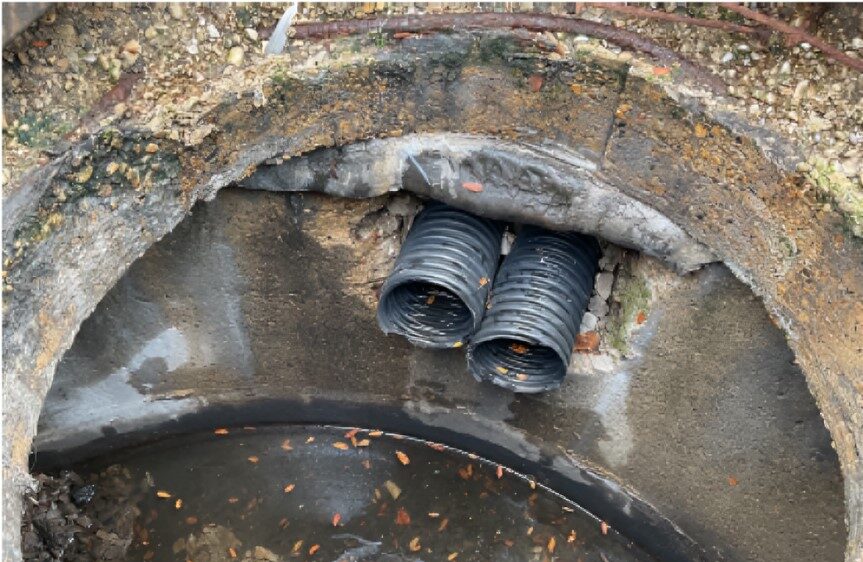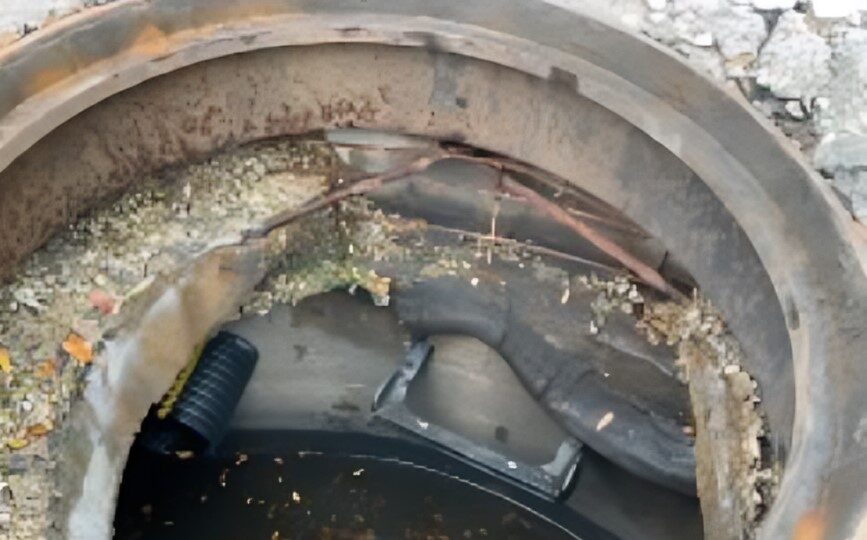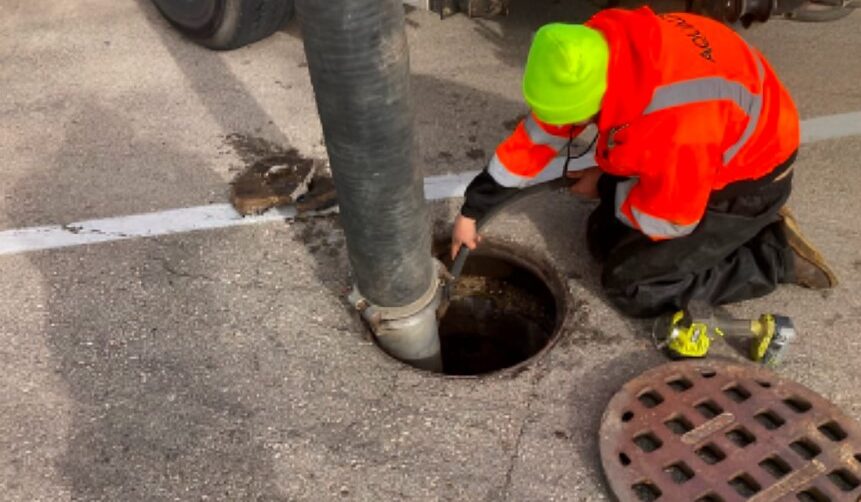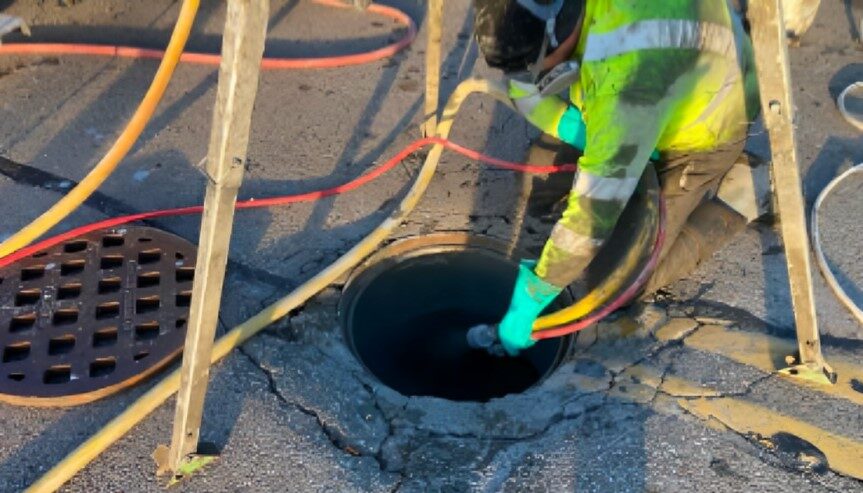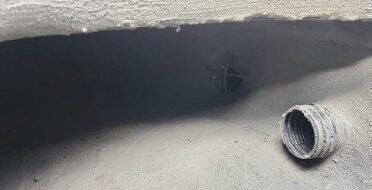Beaver Dam, Wis. Catch Basin Spray Cast
Beaver Dam, Wis. |
Retail |
Spincasting
Overview:
AQUALIS stormwater professionals inspected a retail property and found severe damage to multiple catch basins, necessitating repairs to prevent environmental liability and ensure site operations.
Problem:
Upon inspection of this retail property, AQUALIS stormwater professionals noted severe damage to multiple catch basins. Cleaning and repairing these catch basins ensures the site can continue regular operations and avoid any environmental liability or violations.
Junction boxes are precast structures that act as a connection point for infrastructure, often used as an access point, also called a manhole. Catch basins describe the opening that collects stormwater, often covered in a grate. Catch basins lead to junction boxes below that connect to pipelines that further convey the stormwater to another control structure or off site. As the three structures are used in conjunction with one another, the terms are often used interchangeably.
Because junction boxes are often precast structures, adjustments are made to connect the structure to surrounding infrastructure including parking lots and pipelines. These connection points are especially vulnerable to failure as infrastructure settles and shifts. Small fissures compound quickly into larger issues as water degrades minor failures quickly.
The catch basins on this property had suffered severe interior damage which had been patched and become disjointed again. AQUALIS professionals worked directly with the property owner and manager to understand the history of this site. Knowing these catch basins have been repaired multiple times in only a few years- our professionals chose a durable and effective solution that addressed the root cause of the continual failure.
These junction boxes had shifted and suffered deterioration to the internal structure. Catch basins are often installed as a precast structure connected to pipeline before parking lots are built. Once the underground infrastructure is in place, the area is backfilled to allow for parking lots and buildings to be built. Due to the difference in grade, junction boxes are often lower than the parking lot and can require additional material installed to adjust the structure to grade. These adjustments are often a failure point. Filled with concrete, bricks, blocks etc, the material settles overtime resulting in subgrade infiltration and potential for sinkholes. As stormwater infrastructure is installed at the construction of the property, a failure in one part of the system is often related to a failure somewhere else. Flooding in one area can result from a buildup of sediment or debris in another area. The older the property is, the more likely a stormwater failure is.
On this property, these adjusted areas had deteriorated allowing pollutants to enter the stormwater system. Pieces of the transition lids had broken and fallen into the basin below.
Solution:
To repair all five catch basins, they first had to be cleaned of debris and trash, including any deteriorating concrete, utilizing a vacuumation truck. This provides a clean surface to facilitate the bond between the existing structure and spray coating.
AQUALIS entered each junction box according to OSHA Confined Space Entry Guidelines. Inside, the certified professional could identify and perform necessary repairs. Voids around pipe connections, risers and transition lids within each catch basin were filled.
AQUALIS utilized a repair method called spray casting which coats the structure in an even layer of cementitious material, in this case repair mortar. This method of repair has the same effect as centrifugally cast concrete pipe which utilizes a machine to spin and spray material evenly along the inside of the pipe. For catch basins, this repair is performed manually using a nozzle. The mortar was sprayed evenly along the entire internal surface of the structure. This allowed for an even coat of the coagulant to cover the basin, fill any cracks, voids and imperfections. Spray casting the aging infrastructure was chosen as it is a comprehensive choice that adds to the structural integrity of the basin while effectively lining it. Once each catch basin was coated AQUALIS professionals clearly marked the area and allowed for proper curing of the repair. This method allowed the lifecycle of the structures to be extended, while preventing longer duration replacement of the structures that would have had a larger impact on operations and would have required excavation and rebuilding of sections of the parking lot.
When using mortar or any cementitious material like stucco, grout or mortar, it is crucial to properly dispose of any excess material and clean equipment. Many construction materials are extremely harmful to the environment and local ecosystems. Fish are at the highest risk as the material can damage their eyes, gills and reproductive health. Stormwater often flows directly into oceans, streams and lakes so it is crucial to keep pollutants out of stormwater to protect these ecosystems.
Cementitious wash water should always be contained on construction sites as it is caustic and corrosive. To properly contain the material, AQUALIS created a washout station on site of these repairs. This allowed the team to mitigate costs associated with daily disposal at an approved facility by disposing all material at the completion of the project. Constructed in a location out of the right of way, the washout area was 10’ x 10’ x 8” to allow for full access. At the end of every day of the ongoing repair, all contaminated equipment was rinsed and cleaned in the designated washout area. At the end of the repair job, the washout area was allowed to dry so the cemented material could be broken up and disposed. All excess water was collected for reuse in other construction as appropriate.
By trusting the sustainable water experts, AQUALIS, to perform this repair, the customer can be sure the project was executed effectively. With years of experience, AQUALIS professionals were able to identify the root cause of the problem and provide a solution that will last.
 Kenosha, Wis. Highway KR Regenerative Stormwater ConveyanceThe Root-Pike Watershed Initiative Network Kenosha County, and others worked with AQUALIS to design and implement an innovative solution for stormwater control along Highway KR.
Kenosha, Wis. Highway KR Regenerative Stormwater ConveyanceThe Root-Pike Watershed Initiative Network Kenosha County, and others worked with AQUALIS to design and implement an innovative solution for stormwater control along Highway KR. Durham, N.C. Sinkhole Leads to Stormwater System RehabilitationThe tenant on this property noticed a depression that opened to the ground below and notified the property owners.
Durham, N.C. Sinkhole Leads to Stormwater System RehabilitationThe tenant on this property noticed a depression that opened to the ground below and notified the property owners.

